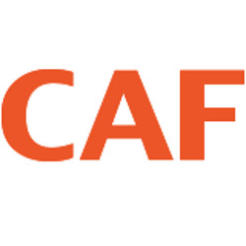The number of households that have ever used a charitable service has gone up to 98 per cent, a survey by the Charities Aid Foundation has shown.
This figure is an increase from 93 per cent in 2014, when the last Charity Street survey was done. The research also found that 83 per cent of households have used a charity service in the last 12 months, up from 79 per cent.
A further 53 per cent of households have used a charity service in the last month, on a similar level with the 51 per cent in 2014.
Key findings:
- The number of households using a charity very regularly – at least once a week - has increased by over 500,000 since 2014 to 3.7m.
- Women are more likely to use charitable services than men, with 54 per cent having done so in the last month, compared to 44 per cent of men. This mirrors the findings from when CAF last carried out the research in 2014.
- Single parent householders are the most frequent users, with 31 per cent using a charity at least once a week, compared to 14 per cent of the UK population overall.
- Young families have seen the biggest increase in their use of charities since 2014. Today 88 per cent said they have used a charitable service in the last year, up from 78 per cent two years ago. They have also used more types of services (on average 3.99 in the last year) than any other household group.
- Over the past year they are also the most likely household type to have received advice or information, medical care or housing support including buying or renting a home through a charity.
- Nearly nine out of ten (88 per cent) 18-24 year-olds used a charity in the last year, making them the most likely age group to have used a charitable service.
- They have also used more types of charities than any other age group (on average 3.75 in the last year) and are now also the most likely group to have ever received medical care (18 per cent) or counselling (33 per cent) from a charity, watched or participated in a theatre production, event or arts-related programme run by a charity (36 per cent), or attended a community, youth or voluntary group (45 per cent).
- People aged 35-44 are the least likely group to use a charitable service in the past 12 months with 77 per cent saying they had done so.
The most common ways UK households have used charities are: buying from charity shops (88 per cent); visiting a charity-run gallery, museum, garden or stately house (73 per cent); visiting a church or religious institution of charitable status (51 per cent); getting advice from a charity or information from a charity website (51 per cent); attending a university (48 per cent); attending a community, youth or voluntary group (such as the Scouts, Girl Guides or Age Concern), or attending an event hosted by them (47 per cent).
Methodology
CAF’s findings come from its Charity Street 2 report, an update on its first Charity Street report, which was published in 2014. The full report will be published in June. The findings are based on a survey of 2,054 UK-based adults by Populus.








